Designing a New Shuttle Service to Meet Large-Scale Instantaneous Peak Demands for Passenger Transportation in a Metropolitan Context: A Green, Low-Cost Mass Transport Option
Abstract
1. Introduction
1.1. Background
1.2. Literature Review
2. Methodology
2.1. Framework for LIPDRS Design
2.1.1. Overall Service Decision Process
- Request Collection. Potential passengers submit their travel requests (each consisting of a preferred location tuple with boarding and alighting locations and a time window tuple with the expected boarding and alighting times) through mobile phones or other devices. The data collection and planning period is designated as one day; that is, in one day, the demands for the next day are collected and planned. Any request that is submitted before the deadline (either a specified moment, such as 12:00 p.m., or some specified number of hours ahead of the service time) will be pushed into the request pool to wait for stage 2. Other requests will be marked as overdue requests and will wait for stage 5.
- Determination of Service Units (DSU). Requests in the request pool are aggregated into a set of service units (which specify the locations at which and time windows in which the requesters will be served) using the approach described in Section 2.3. The set of service units will be sent to the service pool to wait for stage 3. Isolated requests (i.e., requests that do not belong to any service unit) from the request pool are also detected in this stage. These isolated requests will wait for stage 4.
- Fleet Assignment and Routing (FAR). Vehicles are assigned to specific service units, and the fleet is routed, subject to capacity constraints, spatiotemporal constraints, procedure constraints, etc. Through this process, the operators obtain the service routes and scheduled service plan (timetable) for the LIPDRS.
- Economic Evaluation. The operators use evaluation metrics to compare the generated plan with other transport options and evaluate whether the plan will be economically acceptable to passengers. These evaluation metrics are discussed in Section 2.5.
- Request Rejection. To ensure the quality and efficiency of demand-responsive transport, reasonable rejection of certain transport requests is an integral part of designing a transport plan. Three types of requests need to be rejected according to different rejection rules: overdue requests, isolated requests, and uneconomical requests. These three types of rejection occur in different parts of the planning process, as shown in Figure 1. The specific rejection mechanism will be discussed in Section 2.
- Information Feedback. This stage consists of two parts: feedback to requesters who have been assigned to service units, with scheduled boarding and alighting information, and feedback to rejected requesters.
- Service Implementation. After receiving their feedback information, passengers will walk or bike to their specified boarding locations within their specified time windows for service.
2.1.2. LIPDRS Design Model (LIPPD)
2.1.3. Clustering-First, Routing-Second Algorithm for Solving the LIPPD
2.2. Preprocessing and Distance Measurement
2.2.1. Preprocessing
2.2.2. Distance Measurement
2.3. Clustering (First Stage): Determination of Service Units (DSUs)
2.3.1. Main DSU Flows
2.3.2. Initialization
2.3.3. Measurement of Similarity between a Request and a Service Unit
2.3.4. Iteration Method and Termination Criteria
2.4. Routing (Second Stage): Fleet Assigning and Routing (FAR)
2.4.1. Main FAR Flows
2.4.2. Initialization
2.4.3. Master Problem (Relaxed Set Partitioning Problem, MP)
2.4.4. Subproblem (Routing and Pricing Problem, )
2.4.5. Iteration Termination Criteria
2.4.6. Branching Scheme
2.5. Evaluation Metrics
3. Numerical Experiment
3.1. Data Preparation
3.2. Experimental Scheme
3.3. Results and Analyses
3.3.1. Results and Discussion of Step (i)
3.3.2. Results and Discussion of Step (ii)
3.3.3. Results and Discussion of Step (iii)
3.3.4. Results and Discussion of Step (iv)
4. Conclusions
Author Contributions
Funding
Conflicts of Interest
References
- Liu, T.; Ceder, A.; Bologna, R.; Cabantous, B. Commuting by customized bus: A comparative analysis with private car and conventional public transport in two cities. J. Public Transp. 2016, 19, 55–74. [Google Scholar] [CrossRef]
- Zhao, P.; Hu, H. Geographical patterns of traffic congestion in growing megacities: Big data analytics from beijing. Cities 2019, 92, 164–174. [Google Scholar] [CrossRef]
- Wu, W.; Wang, M.X.; Zhang, F. Commuting behavior and congestion satisfaction: Evidence from Beijing, China. Transp. Res. Part D Transp. Environ. 2019, 67, 553–564. [Google Scholar] [CrossRef]
- Saneinejad, S.; Roorda, M.J.; Kennedy, C. Modelling the impact of weather conditions on active transportation travel behaviour. Transp. Res. Part D 2012, 17, 129–137. [Google Scholar] [CrossRef]
- Lu, T.; Zhou, L.; Liu, J.; Zhou, X. Customized bus service design for jointly optimizing passenger-to-vehicle assignment and vehicle routing. Transp. Res. Part C Emerg. Technol. 2017, 85, 451–475. [Google Scholar]
- Dumas, Y.; Desrosiers, J.; Soumis, F. Large Scale Multi-Vehicle Dial-a-Ride Problems; École des Hautes Études Commerciales: Paris, France, 1989. [Google Scholar]
- Zhang, K.; Sun, D.; Shen, S.; Zhu, Y. Analyzing spatiotemporal congestion pattern on urban roads based on taxi gps data. J. Transp. Land Use 2017, 10, 675–694. [Google Scholar] [CrossRef]
- Martínez, L.M.; Viegas, J.M.; Eiró, T. Formulating a new express minibus service design problem as a clustering problem. Transp. Sci. 2014, 49, 85–98. [Google Scholar] [CrossRef]
- Park, J.; Kim, B.I. The school bus routing problem: A review. Eur. J. Oper. Res. 2010, 202, 311–319. [Google Scholar] [CrossRef]
- Cain, A.; Darido, G.; Baltes, M.; Rodriguez, P.; Barrios, J. Applicability of transmilenio bus rapid transit system of bogotá, colombia, to the united states. Transp. Res. Record. 2007, 2034. [Google Scholar] [CrossRef]
- Pan, G.; Qi, G.; Zhang, D.; Zhang, D.; Li, S. Land-use classification using taxi gps traces. IEEE Trans. Intell. Transp. Syst. 2013, 14, 113–123. [Google Scholar] [CrossRef]
- Idris, H.; Clarke, J.P.; Bhuva, R.; Kang, L. Queuing model for taxi-out time estimation. Air Traffic Control Q. 2001, 10, 1–22. [Google Scholar] [CrossRef]
- Lee, D.H.; Wang, H.; Cheu, R.L.; Teo, S.H. A taxi dispatch system based on current demands and real-time traffic conditions. Transp. Res. Rec. J. Transp. Res. Board 2004, 1882. [Google Scholar] [CrossRef]
- Ritzinger, U.; Puchinger, J.; Hartl, R.F. Dynamic programming based metaheuristics for the dial-a-ride problem. Ann. Oper. Res. 2016, 236, 341–358. [Google Scholar] [CrossRef]
- Parragh, S.N.; Jorge, P.D.S.; Almada-Lobo, B. The dial-a-ride problem with split requests and profits. Transp. Sci. 2014, 49, 311–334. [Google Scholar] [CrossRef]
- Clarens, G.C.; Hurdle, V.F. An operating strategy for a commuter bus system. Transp. Sci. 1975, 9, 1–20. [Google Scholar] [CrossRef]
- Larrain, H.; Muñoz, J.C. When and where are limited-stop bus services justified? Transp. A Transp. Sci. 2016, 12, 811–831. [Google Scholar] [CrossRef]
- Ren, Y.; Chen, G.; Han, Y.; Zheng, H. Extracting Potential Bus Lines of Customized City Bus Service Based on Public Transport Big Data; IOP Publishing: Bristol, UK, 2016; Volume 46, p. 012017. [Google Scholar]
- Ma, J.; Yang, Y.; Guan, W.; Wang, F.; Liu, T.; Tu, W.; Song, C. Large-scale demand driven design of a customized bus network: A methodological framework and beijing case study. J. Adv. Transp. 2017, 2017. [Google Scholar] [CrossRef]
- Walteros, J.L.; Medaglia, A.L.; Riaño, G. Hybrid algorithm for route design on bus rapid transit systems. Transp. Sci. 2015, 49, 66–84. [Google Scholar] [CrossRef]
- Ma, J.; Zhao, Y.; Yang, Y.; Liu, T.; Wei, G.; Wang, J.; Song, C. A model for the stop planning and timetables of customized buses. PLoS ONE 2017, 12, e0168762. [Google Scholar] [CrossRef]
- Sun, D.J.; Xu, Y.; Peng, Z.R. Timetable optimization for single bus line based on hybrid vehicle size model. J. Traffic Transp. Eng. 2015, 2, 179–186. [Google Scholar]
- Schittekat, P.; Kinable, J.; Sörensen, K.; Sevaux, M.; Spieksma, F.; Springael, J. A metaheuristic for the school bus routing problem with bus stop selection. Eur. J. Oper. Res. 2013, 229, 518–528. [Google Scholar] [CrossRef]
- Shaheen, S.A. Commuter-based carsharing: Market niche potential. Transp. Res. Rec. J. Transp. Res. Board 2001, 1760, 178–183. [Google Scholar] [CrossRef]
- Katzev, R. Car sharing: A new approach to urban transportation problems. Anal. Soc. Issues Public Policy 2003, 3, 65–86. [Google Scholar] [CrossRef]
- Kek, A.G.H.; Cheu, R.L.; Meng, Q.; Fung, C.H. A decision support system for vehicle relocation operations in carsharing systems. Transp. Res. Part E 2009, 45, 149–158. [Google Scholar] [CrossRef]
- Shaheen, S.A.; Cohen, A.P. Carsharing and personal vehicle services: Worldwide market developments and emerging trends. Int. J. Sustain. Transp. 2013, 7, 5–34. [Google Scholar] [CrossRef]
- Cullen, F.H.; Jarvis, J.J.; Ratliff, H.D. Set partitioning based heuristics for interactive routing. Networks 1981, 11, 125–143. [Google Scholar] [CrossRef]
- Bodin, L.D.; Sexton, T. The multi-vehicle subscriber dial-a-ride problem. Tims Stud. Manag. Sci. 1986, 26, 73–86. [Google Scholar]
- Sexton, T.R.; Bodin, L.D. Optimizing single vehicle many-to-many operations with desired delivery times: I. Scheduling. Transp. Sci. 1985, 19, 378–410. [Google Scholar] [CrossRef]
- Sexton, T.R.; Bodin, L.D. Optimizing single vehicle many-to-many operations with desired delivery times: II. Routing. Transp. Sci. 1985, 19, 411–435. [Google Scholar] [CrossRef]
- Desrosiers, J.; Dumas, Y.; Soumis, F.; Taillefer, S.; Villeneuve, D. An Algorithm for Mini-Clustering in Handicapped Transport. Cah. Du Gerad. 1991. Available online: https://www.researchgate.net/publication/245275603_An_algorithm_for_mini-clustering_in_handicapped_transport (accessed on 12 September 2019).
- Ioachim, I.; Desrosiers, J.; Dumas, Y.; Solomon, M.M.; Villeneuve, D. A request clustering algorithm for door-to-door handicapped transportation. Transp. Sci. 1995, 29, 63–78. [Google Scholar] [CrossRef]
- Pankratz, G. A grouping genetic algorithm for the pickup and delivery problem with time windows. Or. Spectr. 2005, 27, 21–41. [Google Scholar] [CrossRef]
- Bard, J.F.; Jarrah, A.I. Large-scale constrained clustering for rationalizing pickup and delivery operations. Transp. Res. Part B Methodol. 2009, 43, 542–561. [Google Scholar] [CrossRef]
- Qu, Y.; Bard, J.F. A grasp with adaptive large neighborhood search for pickup and delivery problems with transshipment. Comput. Oper. Res. 2012, 39, 2439–2456. [Google Scholar] [CrossRef]
- Masson, R.; Lehuédé, F.; Péton, O. An adaptive large neighborhood search for the pickup and delivery problem with transfers. Transp. Sci. 2013, 47, 344–355. [Google Scholar] [CrossRef]
- Toth, P.; Vigo, D. An Overview of Vehicle Routing Problems; Society for Industrial and Applied Mathematics: Philadelphia, PA, USA, 2001; pp. 1–26. [Google Scholar]
- Toth, P.; Vigo, D. The Vehicle Routing Problem; Tsinghua University Press: Beijing, China, 2011; pp. 127–153. [Google Scholar]
- Parragh, S.N.; Doerner, K.F.; Hartl, R.F. A survey on pickup and delivery problems. Manag. Rev. Q. 2008, 58, 21–51. [Google Scholar]
- Paquette, J.; Cordeau, J.F.; Laporte, G.; Pascoal, M.M.B. Combining multicriteria analysis and tabu search for dial-a-ride problems. Transp. Res. Part B Methodol. 2013, 52, 1–16. [Google Scholar] [CrossRef]
- Cordeau, J.F.; Laporte, G.; Potvin, J.Y.; Savelsbergh, M.W.P. Transportation on demand. Handb. Oper. Res. Manag. Sci. 2007, 14, 429–466. [Google Scholar]
- Fisher, M.L.; Jaikumar, R. A generalized assignment heuristic for vehicle routing. Networks 1981, 11, 109–124. [Google Scholar] [CrossRef]
- Fisher, M.L.; Jörnsten, K.O. Vehicle routing with time windows: Two optimization algorithms. Oper. Res. 1997, 45, 488–492. [Google Scholar] [CrossRef]
- Sol, M. Column Generation Techniques for Pickup and Delivery Problems; Technische Universiteit Eindhoven: Eindhoven, The Netherlands, 1994. [Google Scholar]
- Parragh, S.N.; Schmid, V. Hybrid column generation and large neighborhood search for the dial-a-ride problem. Comput. Oper. Res. 2013, 40, 490–497. [Google Scholar] [CrossRef]
- Ropke, S.; Cordeau, J.F.; Laporte, G. Models and Branch-and-Cut Algorithms for Pickup and Delivery Problems With Time Windows; Wiley-Interscience: Hoboken, NJ, USA, 2007; pp. 258–272. [Google Scholar]
- Masson, R.; Ropke, S.; Lehuédé, F.; Péton, O. A branch-and-cut-and-price approach for the pickup and delivery problem with shuttle routes. Eur. J. Oper. Res. 2014, 236, 849–862. [Google Scholar] [CrossRef]
- Cordeau, J.F.; Laporte, G. A tabu search heuristic for the static multi-vehicle dial-a-ride problem. Transp. Res. Part B Methodol. 2003, 37, 579–594. [Google Scholar] [CrossRef]
- Stiglic, M.; Agatz, N.; Savelsbergh, M.; Gradisar, M. The benefits of meeting points in ride-sharing systems. Transp. Res. Part B 2015, 82, 36–53. [Google Scholar] [CrossRef]
- Li, Y.; Yu, F. A new validity function for fuzzy clustering. In Proceedings of the International Conference on Computational Intelligence and Natural Computing, Wuhan, China, 6–9 June 2009; pp. 462–465. [Google Scholar]
- Fahad, A.; Alshatri, N.; Tari, Z.; Alamri, A.; Khalil, I.; Zomaya, A.Y.; Foufou, S.; Bouras, A. A survey of clustering algorithms for big data: Taxonomy and empirical analysis. Emerg. Top. Comput. IEEE Trans. 2014, 2, 267–279. [Google Scholar] [CrossRef]
- Savas, E.S. On equity in providing public services. Manag. Sci. 1978, 24, 800–808. [Google Scholar] [CrossRef]
- Bezdek, J.C.; Ehrlich, R.; Full, W. Fcm: The fuzzy c-means clustering algorithm. Comput. Geosci. 1984, 10, 191–203. [Google Scholar] [CrossRef]
- Luxburg, U.V. A tutorial on spectral clustering. Stat. Comput. 2007, 17, 395–416. [Google Scholar] [CrossRef]
- Bezdek, J.C. A convergence theorem for the fuzzy isodata clustering algorithms. IEEE Trans. Pattern Anal. Mach. Intell. 1980, 2, 1–8. [Google Scholar] [CrossRef]
- Feillet, D. A tutorial on column generation and branch-and-price for vehicle routing problems. 4OR 2010, 8, 407–424. [Google Scholar] [CrossRef]
- Dumas, Y.; Desrosiers, J.; Soumis, F. The pickup and delivery problem with time windows. Eur. J. Oper. Res. 1991, 54, 7–22. [Google Scholar] [CrossRef]
- O’Sullivan, S.; Morrall, J. Walking distances to and from light-rail transit stations. Transp. Res. Rec. J. Transp. Res. Board 1996, 1538, 19–26. [Google Scholar] [CrossRef]
- Kumar, C.V.P.; Basu, D.; Maitra, B. Modeling generalized cost of travel for rural bus users: A case study. J. Public Transp. 2004, 7, 4. [Google Scholar] [CrossRef]
- Gao, K.; Cao, Z.; Zhang, L.; Chen, Z.; Han, Y.; Pan, Q.J. A review on swarm intelligence and evolutionary algorithms for solving flexible job shop scheduling problems. IEEE/CAA J. Autom. Sinica 2019, 6, 904–916. [Google Scholar] [CrossRef]
- Zhao, J.; Liu, S.; Zhou, M.; Guo, X.; Qi, L. Modified cuckoo search algorithm to solve economic power dispatch optimization problems. IEEE/CAA J. Autom. Sinica 2018, 5, 794–806. [Google Scholar] [CrossRef]
- Bi, J.; Yuan, H.; Tan, W.; Zhou, M.; Fan, Y.; Zhang, J.; Li, J. Application-aware dynamic fine-grained resource provisioning in a virtualized cloud data center. IEEE Trans. Autom. Sci. Eng. 2015, 14, 1172–1184. [Google Scholar] [CrossRef]
- Li, W.; Xia, Y.; Zhou, M.; Sun, X.; Zhu, Q. Fluctuation-aware and predictive workflow scheduling in cost-effective infrastructure-as-a-service clouds. IEEE Access 2018, 6, 61488–61502. [Google Scholar] [CrossRef]
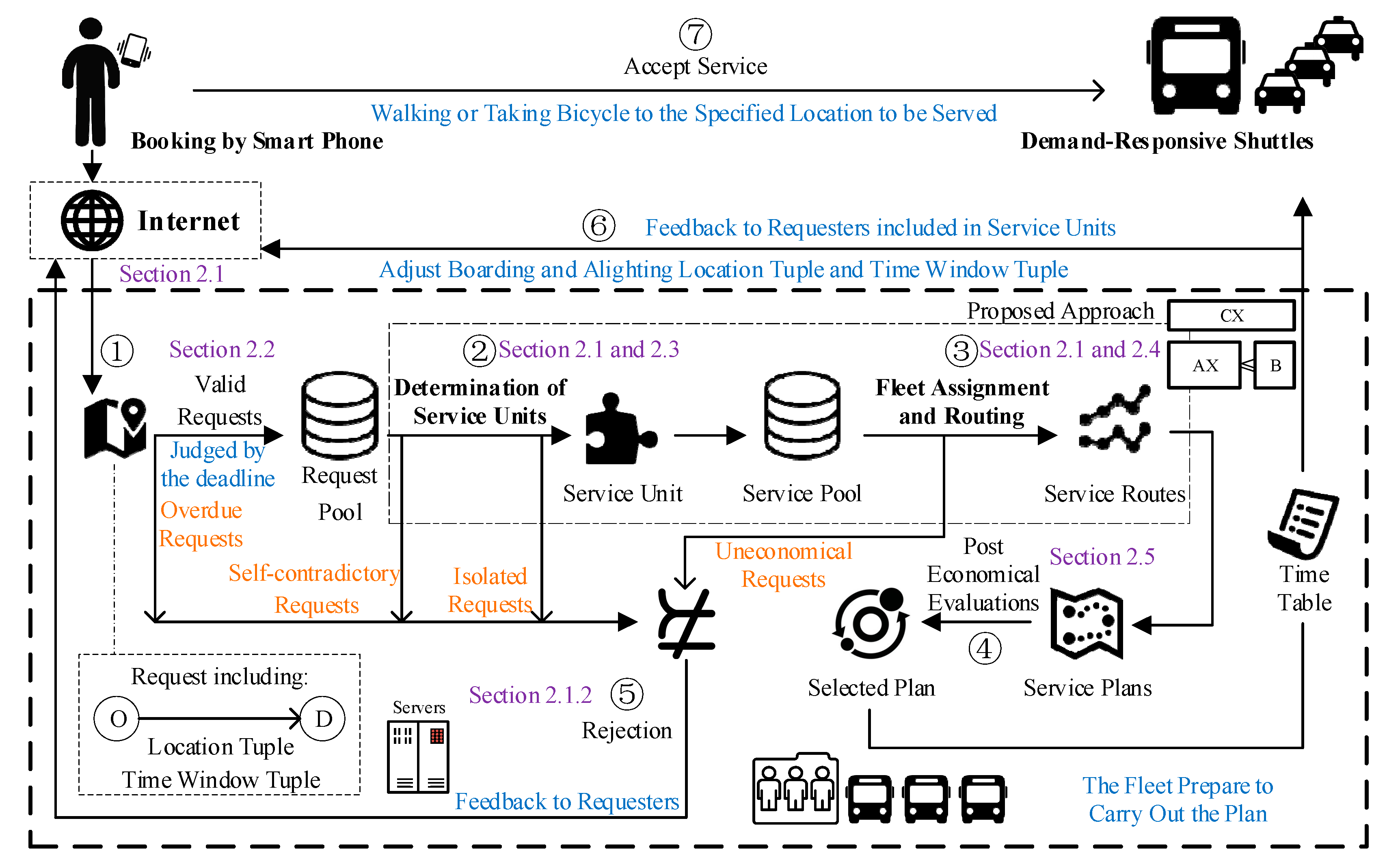


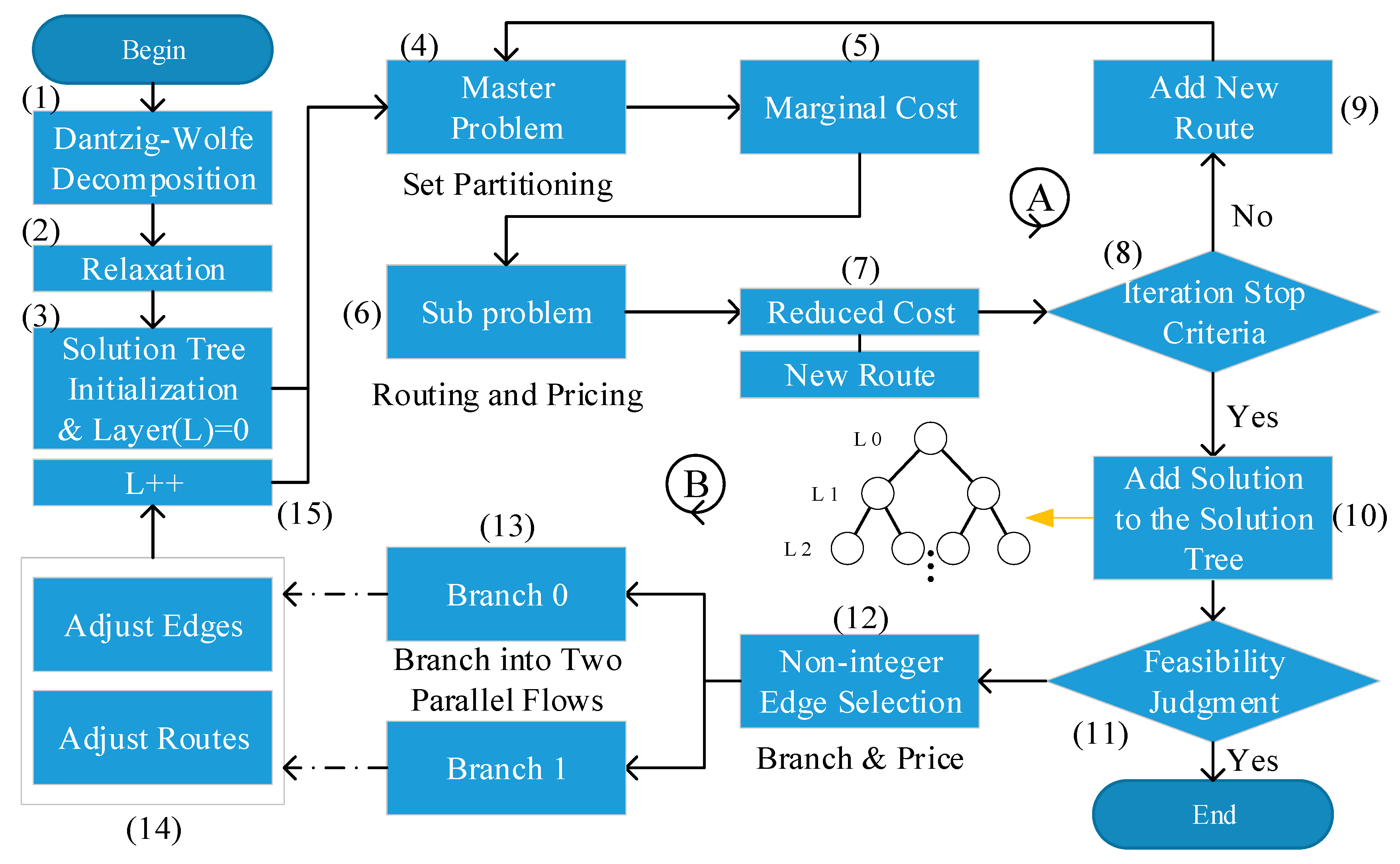
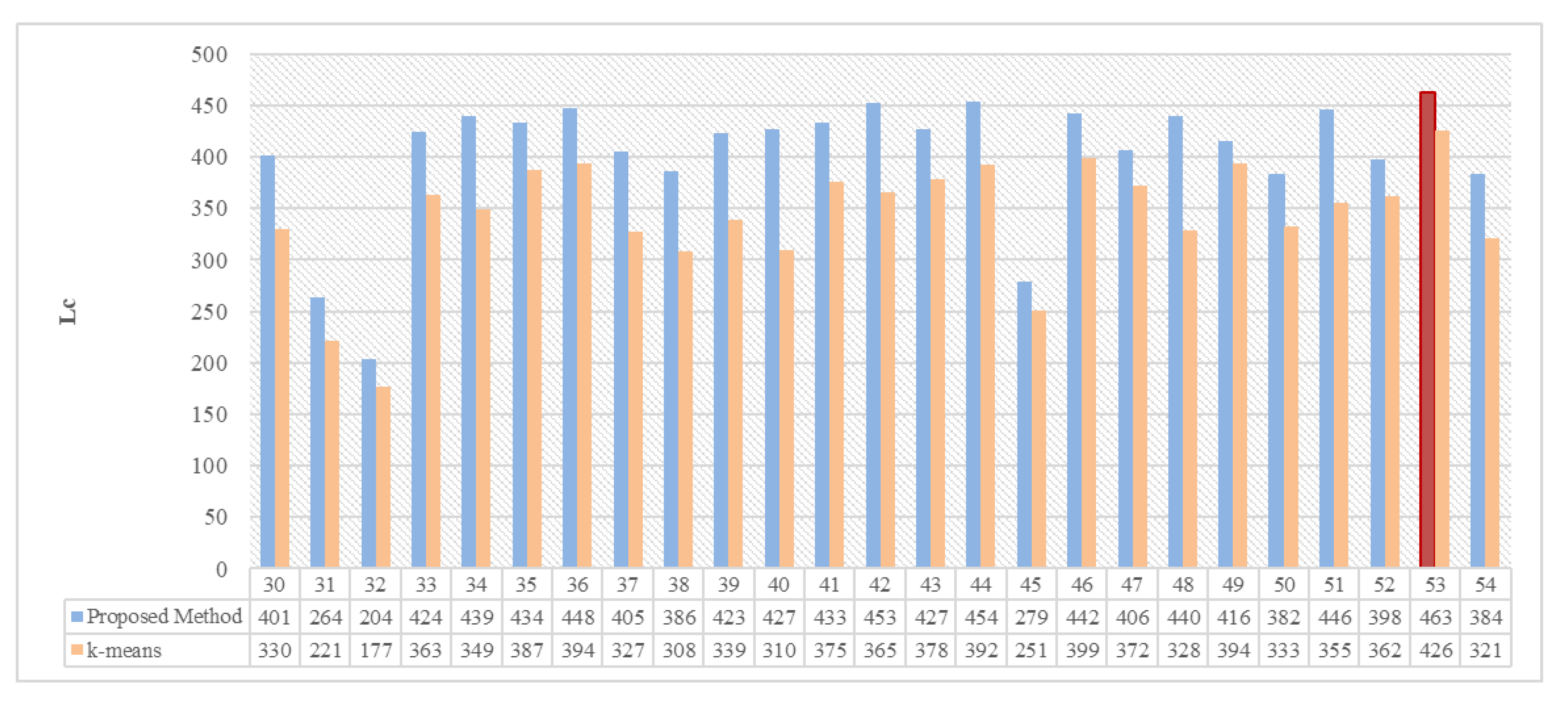

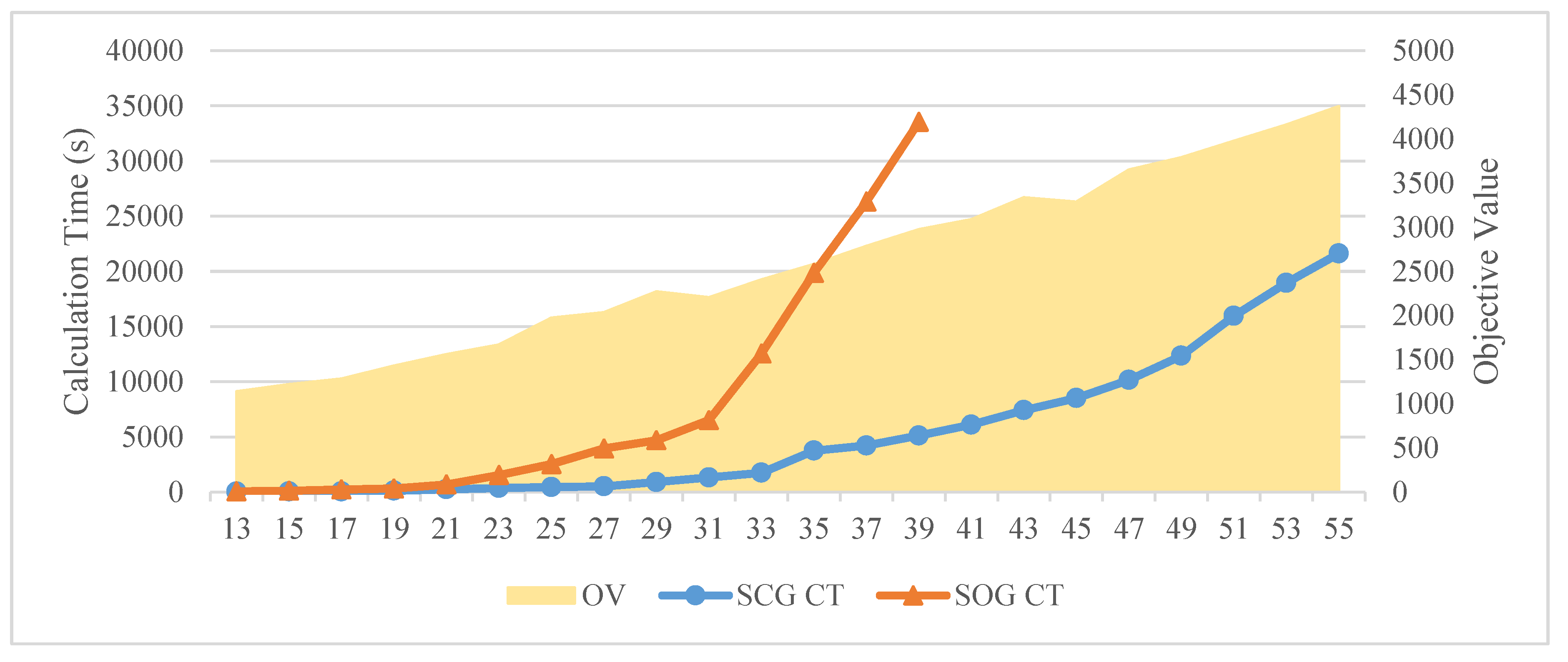
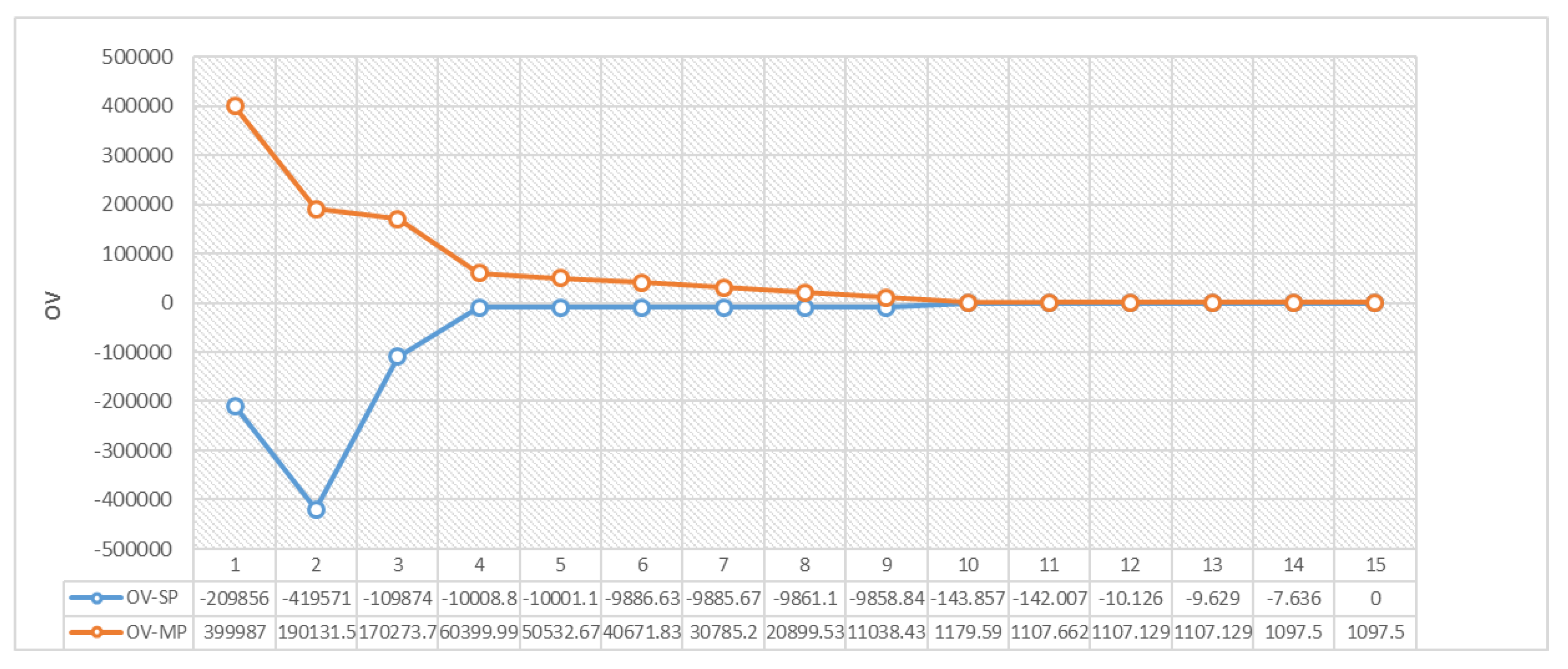
| Name 1 | Schedule Frequency | TD 2 | Decision Basis | Request Method | Service Locations | P 3 | C 4 | R 5 |
|---|---|---|---|---|---|---|---|---|
| Taxi | N/A | OID | N/A | Encounters | Uncertain | H | H | [11,12,13] |
| DARS | Flexible | OID | OD information, preferred arrival/departure times | Phone/Internet bookings | OD points | H | H | [14,15] |
| TCS | Fixed frequency | RMD | Historical information | Surveys/consultation | Bus stations | L | L | [16,17] |
| CB | Flexible frequency | RMD | Estimated OD information | Surveys/historical data | Bus stations | L | M | [1,18,19,20,21,22] |
| SB | Fixed routes | RMD | Registered information | School records | Home and school | L | H | [9,23] |
| CS | Flexible | OID | OD information, preferred arrival/departure times | Phone/Internet bookings | Fixed B&A6 | L | M | [24,25,26,27] |
| LIPDRS | Determined based on dynamic requests | OMD | Aggregated OD information and preferred arrival/departure times | Phone/Internet bookings | Dynamic B&A6 | L | M | This study |
| ID | Parameter Name | Value | Unit | Source |
|---|---|---|---|---|
| 1 | Maximum walking time, | 5 | min | [59] |
| 2 | Set of candidate numbers of service units, | Estimated | ||
| 3 | Operation time redundancy, | 15 | min | Survey |
| 4 | Threshold, | 0.001 | [54] | |
| 5 | Maximum number of iterations, | 200 | [7] | |
| 6 | Unit cost of a vehicle, | 1 4 | unit/km | [57] |
| 7 | Fixed cost of a vehicle, | 90 4 | units | [57] |
| 8 | Penalty value for canceling a request, | 180 4 | units | Survey |
| 9 | Cost that passengers expect to incur for additional walking time (CNY/min), | 5 | CNY/min | Survey |
| 10 | Maximum operating distance, | 240 | km | Survey |
| 11 | Maximum driving time, | 360 | min | Survey |
| 12 | Vehicle capacity, | 56 | Survey | |
| 13 | Fleet size, | 50 | Setting | |
| 14 | Vehicle operating speed | ESRN 3 | km/h | Digital map |
| 15 | Fixed price for using the service, | 1 | CNY | Survey 1 |
| 16 | Variable price for using the service, | 0.25 | CNY/km | Survey 1 |
| 17 | Generalized cost of using the service, | 400 | CNY/h | [60] |
| 18 | Depot location 2 | Lat: 40.0521, Lng: 116.3085 | Survey |
| Route ID | 14 | 15 | 17 | 18 | 19 | 20 | 21 | 22 | 23 | 25 | |
| Value | 0.5 | 1 | 0.5 | 1 | 1 | 1 | 1 | 0.5 | 1 | 1 | |
| Edge ID | 2 | 101 | 144 | 111 | 50 | 98 | 67 | 108 | 56 | 142 | 71 |
| Value | 0.5 | 0.5 | 0.5 | 0.5 | 0.5 | 0.5 | 0.5 | 0.5 | 0.5 | 0.5 | 0.5 |
| Calculation time | 14,230 ms | ||||||||||
| Objective value | 1097.4995 | ||||||||||
| Iterations | 15 | ||||||||||
| Total Passenger Cost (CNY) | Total Fleet Cost (Units) | |||||
|---|---|---|---|---|---|---|
| 50 | 30263.68 | 7152.60 | 208046.58 | 1710.00 | 2405.50 | 180.00 |
| 51 | 28127.17 | 6917.87 | 201217.97 | 1800.00 | 2453.49 | 180.00 |
| 52 | 26703.37 | 6932.35 | 201639.24 | 1800.00 | 2498.54 | 180.00 |
| 53 | 24211.44 | 6624.00 | 192669.20 | 1800.00 | 2389.43 | 180.00 |
| 54 | 23498.54 | 6829.69 | 198652.70 | 2070.00 | 2502.57 | 180.00 |
| Average and Standard Deviation of Passenger Cost (CNY) | Average and Standard Deviation of Fleet Cost (units) | |||||
| 50 | 42.51±6.15 | 10.05±2.78 | 292.20±14.89 | 90.00±0 | 126.61±21.37 | 180.00±0 |
| 51 | 39.50±4.69 | 9.72±3.74 | 282.61±12.64 | 90.00±0 | 122.67±20.14 | 180.00±0 |
| 52 | 37.51±4.05 | 9.74±4.29 | 283.21±9.96 | 90.00±0 | 124.93±18.48 | 180.00±0 |
| 53 | 34.00±5.59 | 9.30±2.88 | 270.60±12.31 | 90.00±0 | 119.47±15.12 | 180.00±0 |
| 54 | 33.00±5.08 | 9.59±3.21 | 279.01±14.87 | 90.00±0 | 108.81±14.15 | 180.00±0 |
| Dataset | Transport Option | Total Passenger Cost (CNY) | Total Fleet Cost (Units) | ||||
|---|---|---|---|---|---|---|---|
| RRD | LIPDRS | 17409.55 | 4763.66 | 138550.25 | 1800.00 | 2389.43 | 180.00 |
| DtD | 0.00 | 8959.04 | 260597.63 | 2790.00 | 4014.38 | 0.00 | |
| ARR | LIPDRS | 58562.81 | 8503.62 | 247348.89 | 2520.00 | 3657.60 | 3960.00 |
| DtD | 0.00 | 8635.94 | 251198.25 | 2700.00 | 4069.15 | 0.00 | |
| ARCR 25% | LIPDRS | 44964.53 | 8327.44 | 242223.61 | 2340.00 | 3212.11 | 1800.00 |
| DtD | 0.00 | 8900.32 | 258889.43 | 2610.00 | 3956.89 | 0.00 | |
| ARCR 50% | LIPDRS | 31222.60 | 7005.99 | 203781.57 | 2160.00 | 3015.32 | 1440.00 |
| DtD | 0.00 | 7901.70 | 229838.41 | 2700.00 | 3957.64 | 0.00 | |
| ARCR 75% | LIPDRS | 23392.24 | 6682.68 | 194376.27 | 1890.00 | 2489.66 | 360.00 |
| DtD | 0.00 | 9091.06 | 264438.16 | 2970.00 | 4014.27 | 0.00 | |
| ACR | LIPDRS | 13457.35 | 6418.37 | 186687.16 | 1620.00 | 2401.47 | 180.00 |
| DtD | 0.00 | 9282.13 | 269996.44 | 2610.00 | 3981.22 | 0.00 | |
| Dataset | Transport Option | Average and Standard Deviation of Passenger Cost (CNY) | Average and Standard Deviation of Fleet Cost (units) | ||||
|---|---|---|---|---|---|---|---|
| RRD | LIPDRS | 34.00 ± 5.59 | 9.30 ± 3.88 | 270.60 ± 12.31 | 90.00 ± 0 | 119.47 ± 15.12 | 180.00 ± 0 |
| DtD | 0.00 | 12.58 ± 3.25 | 366.01 ± 11.69 | 90.00 ± 0 | 129.50 ± 16.27 | 0.00 | |
| ARR | LIPDRS | 82.25 ± 15.14 | 11.94 ± 2.69 | 347.40 ± 18.74 | 90.00 ± 0 | 130.63 ± 12.48 | 180.00 ± 0 |
| DtD | 0.00 | 12.13 ± 2.28 | 352.81 ± 21.67 | 90.00 ± 0 | 135.64 ± 14.27 | 0.00 | |
| ARCR 25% | LIPDRS | 63.15 ± 10.48 | 11.70 ± 2.99 | 340.20 ± 18.12 | 90.00 ± 0 | 123.54 ± 13.64 | 180.00 ± 0 |
| DtD | 0.00 | 12.50 ± 3.47 | 363.61 ± 18.97 | 90.00 ± 0 | 136.44 ± 13.78 | 0.00 | |
| ARCR 50% | LIPDRS | 43.85 ± 8.79 | 9.84 ± 3.47 | 286.21 ± 15.36 | 90.00 ± 0 | 125.64 ± 14.27 | 180.00 ± 0 |
| DtD | 0.00 | 11.10 ± 2.49 | 322.81 ± 21.48 | 90.00 ± 0 | 131.92 ± 14.68 | 0.00 | |
| ARCR 75% | LIPDRS | 32.85 ± 6.01 | 9.39 ± 2.18 | 273.00 ± 12.21 | 90.00 ± 0 | 118.56 ± 14.96 | 180.00 ± 0 |
| DtD | 0.00 | 12.77 ± 1.98 | 371.40 ± 13.74 | 90.00 ± 0 | 121.64 ± 17.01 | 0.00 | |
| ACR | LIPDRS | 18.90 ± 5.57 | 9.01 ± 2.01 | 262.20 ± 14.27 | 90.00 ± 0 | 133.42 ± 14.12 | 180.00 ± 0 |
| DtD | 0.00 | 13.04 ± 2.57 | 379.21 ± 20.13 | 90.00 ± 0 | 137.28 ± 15.21 | 0.00 | |
© 2019 by the authors. Licensee MDPI, Basel, Switzerland. This article is an open access article distributed under the terms and conditions of the Creative Commons Attribution (CC BY) license (http://creativecommons.org/licenses/by/4.0/).
Share and Cite
Zheng, H.; Chen, J.; Zhang, X.; Yang, Z. Designing a New Shuttle Service to Meet Large-Scale Instantaneous Peak Demands for Passenger Transportation in a Metropolitan Context: A Green, Low-Cost Mass Transport Option. Sustainability 2019, 11, 5025. https://doi.org/10.3390/su11185025
Zheng H, Chen J, Zhang X, Yang Z. Designing a New Shuttle Service to Meet Large-Scale Instantaneous Peak Demands for Passenger Transportation in a Metropolitan Context: A Green, Low-Cost Mass Transport Option. Sustainability. 2019; 11(18):5025. https://doi.org/10.3390/su11185025
Chicago/Turabian StyleZheng, Han, Junhua Chen, Xingchen Zhang, and Zixian Yang. 2019. "Designing a New Shuttle Service to Meet Large-Scale Instantaneous Peak Demands for Passenger Transportation in a Metropolitan Context: A Green, Low-Cost Mass Transport Option" Sustainability 11, no. 18: 5025. https://doi.org/10.3390/su11185025
APA StyleZheng, H., Chen, J., Zhang, X., & Yang, Z. (2019). Designing a New Shuttle Service to Meet Large-Scale Instantaneous Peak Demands for Passenger Transportation in a Metropolitan Context: A Green, Low-Cost Mass Transport Option. Sustainability, 11(18), 5025. https://doi.org/10.3390/su11185025




